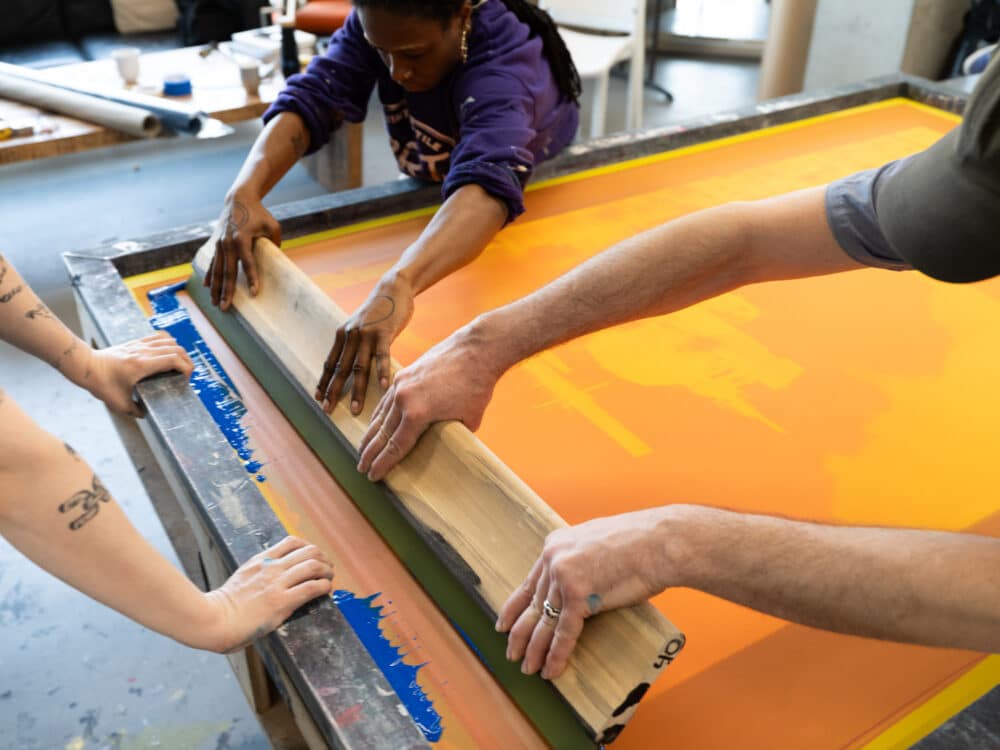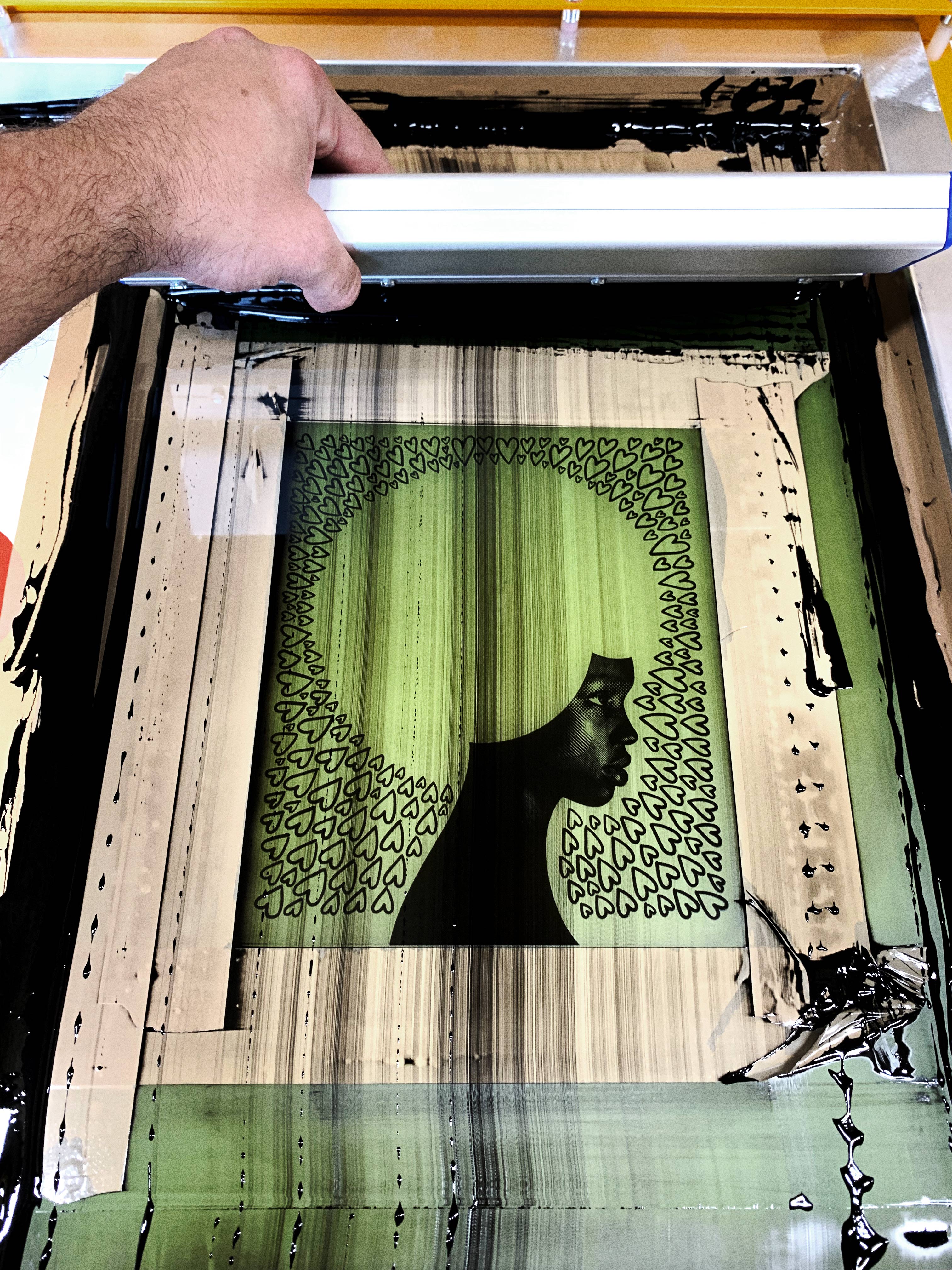The Crucial Guide to Understanding Screen Printing and Its Versatile Uses
Screen printing has an abundant history that dates back to old times, advancing into an innovative strategy used across various industries today. This guide checks out the complexities of the screen printing procedure, outlining its applications in advertising and marketing, style, and home décor - 10:9 Design LLC Company. Understanding these basics can open innovative potential for both artistic and commercial tasks. The complying with areas will disclose vital pointers and methods to enhance one's screen printing ventures
The History of Screen Printing
Screen printing has origins that map back centuries, its advancement mirrors the technical and imaginative innovations of different societies. Originating in old China, the method was originally made use of for enhancing textiles and later spread to Japan, where it came to be integral to Ukiyo-e woodblock printing. The method moved to Europe in the 18th century, where it got popularity amongst artisans and commercial printers. The creation of image solution in the 20th century reinvented screen printing, permitting even more intricate layouts and greater efficiency. Artists like Andy Warhol further pushed its popularity, making use of the tool to create renowned works that combined commercialism and art. By the late 20th century, screen printing had established itself as a functional technique, used in fashion, marketing, and great art. Today, it continues to advance, incorporating electronic innovation and broadening its applications throughout various industries.
The Screen Printing Refine Explained
Screen printing transforms artistic visions into concrete designs through a collection of accurate steps. A photo is produced and after that transferred onto a screen, normally made of fine mesh textile stretched over a framework. A light-sensitive emulsion is applied to the screen, which is revealed to light, hardening in locations not covered by the image. After washing out the unhardened solution, a stencil is formed.
Next off, the screen is put over the substrate, whether it be textile, paper, or an additional product. Ink is after that pressed through the open areas of the stencil utilizing a squeegee, depositing the style onto the substrate below. This process can be repeated for multiple shades, calling for separate screens for each hue. The published thing is treated utilizing warmth to guarantee the ink sticks properly, resulting in a long lasting, dynamic style all set for use.
Kinds Of Screen Printing Techniques

In addition, specialized strategies, such as discharge screen printing, remove dye from the material to produce softer prints, while aluminum foil screen printing uses metal aluminum foil to achieve a shiny coating (10:9 Design LLC Company). Each strategy provides unique attributes, accommodating numerous innovative demands and production scales, eventually expanding the opportunities within the screen printing domain
Applications of Screen Printing in Various Industries

In addition, the signs and advertising industries make use of screen printing for developing captivating displays and banners. This method enables bold colors and detailed designs that catch focus. In electronics, screen printing is employed for applying conductive inks to motherboard, important for part links. Additionally, the home style sector accepts screen printing to produce unique layouts on textiles and wall surface art. In general, screen printing functions as an essential tool across diverse fields, enhancing products with individualized and visually appealing graphics.
Tips for Effective Screen Printing Projects
While taking on a screen printing project, careful interest to information can substantially improve the last end result. Picking high-quality products is essential; this includes the screen, inks, and substrates. Utilizing suitable mesh counts can influence ink deposition and information resolution. Preparation is similarly important; extensive cleansing of displays and correct direct exposure times ensure crisp prints.
Next, precise enrollment is important for multi-color prints. Utilizing alignment tools can aid achieve accurate layering. Furthermore, screening prints on scrap materials prior to manufacturing assists identify potential problems without losing sources.

Often Asked Inquiries
What Materials Are Finest for Screen Printing on Fabric?
Cotton and polyester blends are suitable for screen printing on textile because of their toughness and ink absorption. Furthermore, specialty fabrics like silk or canvas can produce distinct appearances and surfaces, enhancing the overall style top quality.
Exactly how Do I Tidy and Maintain Screen Printing Devices?
To clean up and maintain screen printing tools, one should frequently wash screens with appropriate solvents, inspect squeegees for wear, oil moving components, and store all items in a completely dry, dust-free setting to extend their life-span.
What Are the Environmental Effects of Screen Printing?
Screen printing can have considerable ecological impacts, consisting of chemical waste from inks and solvents, water usage during cleansing procedures, and power consumption. Sustainable practices and eco-friendly products are crucial for decreasing these negative impacts.
Can Screen Printing Be Done at Home Effectively?
Screen printing can be efficiently done at home with the appropriate products and techniques. Enthusiasts can produce quality prints, though success depends upon their skill degree, equipment, and understanding of the process entailed.
What Are the Prices Connected With Beginning a Screen Printing Organization?

Beginning a screen printing organization includes costs for equipment, products, and work space. Initial expenses generally range from a couple of hundred to numerous thousand dollars, depending on the scale, quality of equipment, and preferred manufacturing capacity.
Screen printing has a rich history that dates back to old times, developing into a sophisticated method utilized across numerous sectors today. One more method, rotary screen printing, uses cylindrical displays, helping with constant printing on fabric rolls, consequently boosting efficiency for massive manufacturings. Additionally, specialty strategies, such as discharge screen printing, get rid of dye from the material to develop softer prints, while foil screen printing applies metal foil to accomplish a glossy coating. In the style sector, screen printing is extensively used to create lively designs on garments, making it possible for brand names to display their unique designs. Cotton and polyester blends are optimal for screen printing on material due to their longevity and ink absorption.